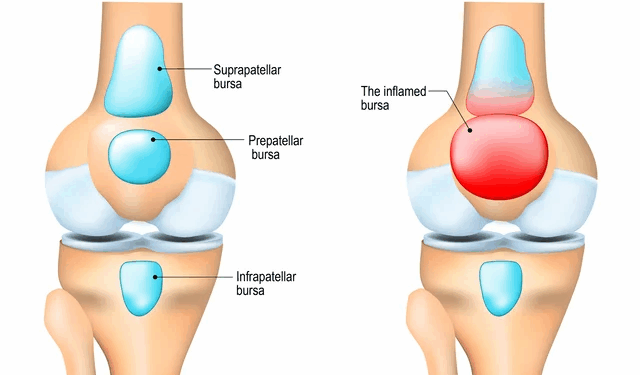7 Essential Facts You Should Know About Bursitis

Ever felt pain, swelling, or stiffness around your joints and weren’t sure what was causing it? One possible culprit is bursitis — a common and often misunderstood condition. Here’s what you need to know:
1. What’s a Bursa, Anyway?
Your body contains over 140 small, fluid-filled sacs called bursae (that’s plural for bursa). These tiny cushions help reduce friction between bones, tendons, and muscles — basically acting as lubricants to keep your joints moving smoothly.
2. So, What Is Bursitis?
Bursitis happens when one of these bursae becomes inflamed. The lining thickens and fills with excess fluid, causing discomfort and swelling. It’s like your body’s way of saying, “Hey, something’s not right here.”
3. Symptoms Can Vary
Bursitis doesn’t always look the same. You might notice:
- Pain around a joint (especially with movement)
- Swelling or tenderness
- Stiffness
- Red, warm skin over the area
The exact symptoms depend on where the inflammation is and what caused it.
4. What Causes Bursitis?
Several things can irritate a bursa and lead to inflammation:
- Repetitive movements (like typing, kneeling, or throwing)
- Frequent pressure (resting elbows on hard surfaces)
- Joint issues like arthritis
Even a single injury, like a fall, can trigger bursitis.
5. Watch Out for Infection
Sometimes, a bursa can become infected — this is known as septic bursitis, and it’s serious. Signs include:
- The area becoming very red, warm, and swollen
- Fever or flu-like symptoms
This type of bursitis needs immediate medical treatment, usually with antibiotics.
6. Most Cases Get Better at Home
The good news? If there’s no infection, bursitis often improves with simple care:
- Rest the affected area
- Use ice packs to reduce swelling
- Take over-the-counter pain relievers like ibuprofen
With care, many people feel better within 2 to 3 weeks.
7. When to See a Doctor
If your symptoms aren’t improving — or they’re getting worse — don’t wait. A doctor may:
- Check for infection
- Drain the bursa to reduce pressure
- Recommend physical therapy to prevent future flare-ups
Bottom Line
Bursitis can be painful, but with the right care, it’s usually manageable. Knowing the signs and understanding when to treat it at home vs. when to seek medical help can make all the difference in your recovery.
